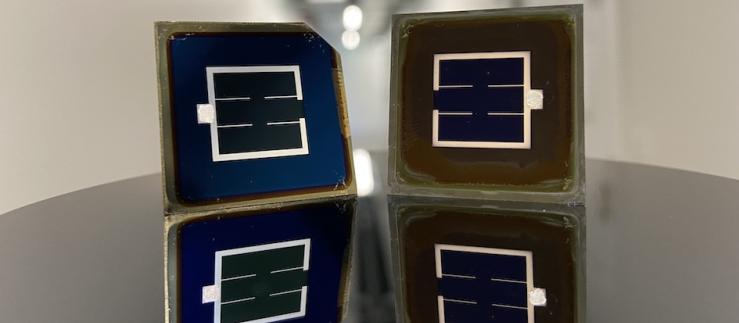For the past 12 years, Switzerland has been ranked as the most innovative country in the Global Innovation Index published by the World Intellectual Property Organization (WIPO). With internationally recognized research centers, strong technological skills, and a qualified and productive workforce, it is not surprising that the Swiss Confederation is consistently ranked as one of the world’s most innovative countries.
Over the years, Switzerland has seen the birth of historic inventions such as Velcro, the coronary stent, aluminum foil, and the World Wide Web at CERN. Inspired by its centuries-long watchmaking heritage, Switzerland has developed a unique know-how in the interconnected fields of precision mechanics, micro and nanotechnology, and medical technologies. Even today, many projects or inventions are evidence of Switzerland’s culture of innovation in new technologies. Here are 10 of them that you may not have known about.
Reproducing the human lung in the laboratory
Winner of the Swiss Medtech Award 2022, AlveoliX has created a small-scale replica of the human lung called “Lung-on-Chip” that can also mimic respiratory motions. This organ-on-chip makes it possible to develop more effective and personalized drugs since the tests can be performed with a given patient’s cells. AlveoliX has already partnered with pharmaceutical companies that want to test their drugs. The next step for the company is the commercialization of its technology.
The world’s first machine to produce human skin tissue
In collaboration with CSEM, CUTISS has developed denovoCast, the world’s first automated machine to produce customized skin tissue grafts for adults and children with severe skin injuries, such as deep burns. The tissue produced by the machine, called denovoSkin, grows using the body’s own tissue as a template. It has unique features that can surpass any current medical treatment for large and deep skin injuries.
The first quantum smartphone
ID Quantique uses the principles of quantum mechanics to create a foolproof encryption system. While in 2020 Samsung and SK Telekom launched the first consumer quantum smartphone integrating this Geneva-based technology, ID Quantique now supplies government, company, and academic customers in more than 60 countries and on every continent. In particular, it contributes to securing South Korea’s networks.
The first space-cleaning mission
EPFL spin-off ClearSpace is developing a technology to clean up space junk. ClearSpace has been commissioned by the European Space Agency (ESA) to carry out the ClearSpace-1 mission planned for 2025. This mission’s goal is to remove a 112-kilogram conical object from orbit. Eventually, CleanSpace hopes to commercialize its model and offer operators the possibility of removing their satellites that are no longer in operation.
The 24/7 blood pressure monitor
Following 17 years of research, the Neuchâtel-based start-up Aktiia has developed a wearable device with optical sensors on the wrist that automatically monitors blood pressure 24 hours a day. This technology has over 10 times the engagement rate of other blood pressure monitors. Presented at CES 2022, the device is currently available for sale in seven countries across Europe and entered the U.S. market through a landmark study with Brigham and Women’s Hospital (BWH).
The wood-based electrically conductive furniture panel
A research team from the Institute for Materials and Wood Technology IWH at the Bern University of Applied Sciences (BFH) has developed a wood-based panel that conducts electricity. Inside the panel are two thin layers containing carbon fibers, through which the current can flow. Intended for wooden furniture manufacturing, a patent application for the low electrical conductivity furniture panel was filed, and a recycling concept was developed. The next step will be to develop the product until it reaches the market.
The co-pilot for blind and visually impaired people
Created in January 2021, the Vaud-based company biped has developed an AI-co-pilot for blind and visually impaired people. Unlike existing solutions such as a guide dog or walking stick that can be stigmatizing, biped developed a wearable device comprising a comfortable and lightweight collar fitted with 3D cameras. It continuously monitors a 170° field of view for the user, detecting, tracking, and predicting the trajectories of all surrounding elements a few seconds in advance. It then filters the relevant information and warns the wearer of any obstacles via immersive 3D sounds.
The next-generation nutrition
Embion‘s platform biomass processing technology enables the repurposing of food and agricultural industry by-products towards high-value, nature-derived functional ingredients. Such upcycling helps to expand food resources, supply security and sustainability with a technology that efficiently reduces the carbon footprint of food production. Embion aims to upcycle 1 million tons of biomass and save 100 million tons of CO2 by 2025.
Authenticating works of art using deep tech and AI
The start-up MATIS, created within the CSEM, revolutionizes the identification of works of art thanks to deep tech and AI to make the expertise of paintings easier. Thanks to an easy-to-use multispectral camera and a specialized image processing algorithm, the solution of the Neuchâtel-based start-up reveals information hidden in the paintings. The camera transmits this information to software that combines classical signal processing and machine learning techniques, features invisible to the naked eye, such as erased signatures, work hidden beneath the apparent work, and pigment representations.
The technology that protects athletes from brain injuries
EPFL spin-off Bearmind is developing sensors and algorithms to provide a real-time concussion risk assessment to protect athletes from long-term brain damage. The technology rests on three core pillars: first, sensors collect information about the movement of the head in the helmet; second, force sensors embedded in the helmet measure the intensity and location of impacts; and third, an algorithm processes the signals and provides objective measurements of the impacts.
According to the Patent Index 2021 of the European Patent Office (EPO), Switzerland is the country filing the most patents in the world in proportion to its population. Whether it is George de Mestral’s Velcro, AlveoliX’s “lung-on-chip” or Alfred Neweczerzal’s vegetable peeler, Switzerland continues to surprise with its inventiveness and ingenuity.







